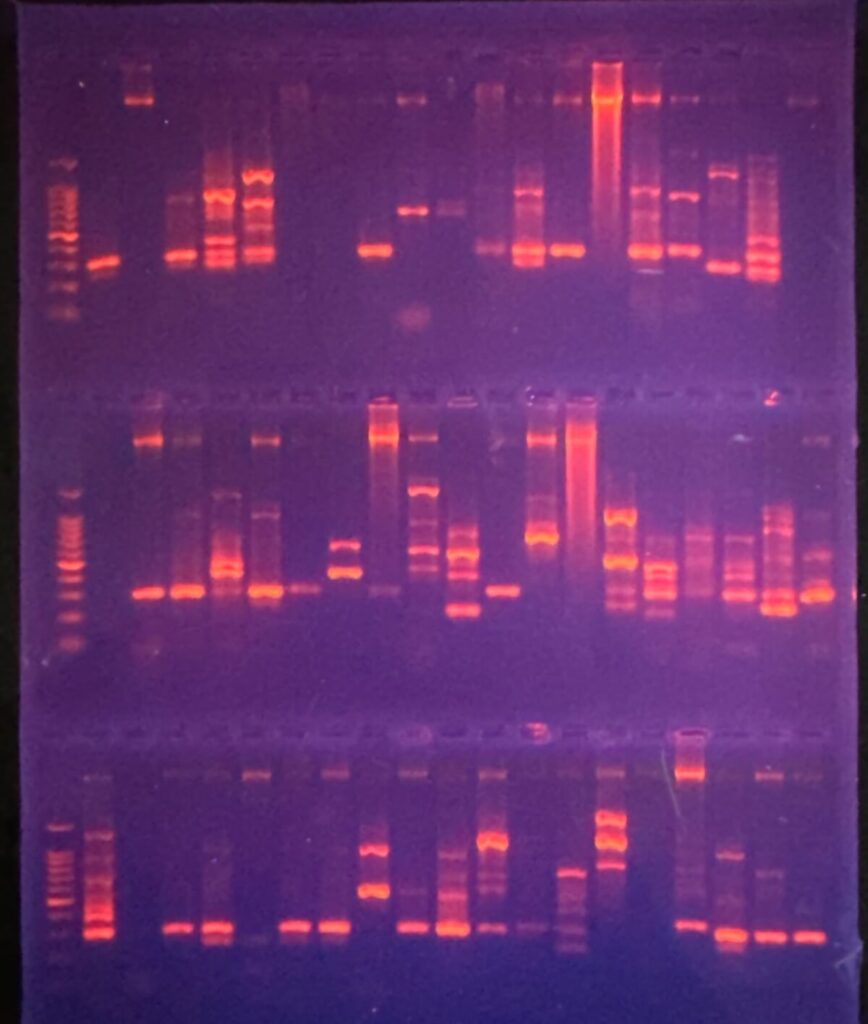6 Benefits of Automated DNA Extraction
DNA extraction is a fundamental process underpinning many research and diagnostic applications in molecular biology. Traditionally, this has been a labor-intensive process prone to variability and errors when performed manually. However, technological advancements have led to the development of automated DNA extraction systems, offering numerous advantages over manual methods. Keep reading to explore 6 key benefits of automated DNA extraction, how this process of extraction works, and compare it to manual DNA extraction methods.

What is Automated DNA Extraction?
6 Benefits of Automated DNA Extraction
1. Increased Throughput and Cost-Effectiveness
One of the most significant advantages of automated DNA extraction is the ability to process many samples simultaneously. Automated systems can handle multiple samples in parallel, significantly increasing throughput compared to manual DNA extraction methods. This capability is particularly beneficial for large-scale studies and high-throughput screening applications, often leading biomedical professionals to search for a trusted biospecimen provider.
Although automated DNA extraction systems may require a significant initial investment, they result in substantial long-term cost savings. Automation reduces labor needs, minimizes errors, and increases overall efficiency, making it a more cost-effective operation than manual DNA extraction over time.
2. Enhanced Reproducibility and Consistency
Automated DNA extraction systems eliminated the variability associated with manual techniques. Manual extraction can be influenced by the technician’s skills and experience, leading to inconsistencies in DNA yield and purity. Automation ensures that each sample is processed under identical conditions, producing highly reproducible and consistent results.
3. Time and Labor Savings
Manual DNA extraction is a time-consuming and labor-intensive process that requires multiple steps and careful handling of reagents. By contrast, automated DNA extraction systems streamline the workflow, reducing the hands-on time required from technicians. This allows laboratory personnel to focus on other critical tasks, improving overall efficiency and productivity.
4. Reduced Risk of Contamination
Contamination is a significant concern in DNA extraction, as it can compromise the integrity of the results. Automated DNA extraction systems are designed to minimize the risk of contamination by reducing the number of manual handling steps. Closed systems and automated pipetting further decrease the likelihood of cross-contamination between samples.
5. Improved DNA Yield and Quality
Automated DNA extraction systems are optimized to maximize DNA yield and purity. These systems use precise and controlled conditions for each step of the extraction process. Ensuring the DNA is efficiently isolated and free from contaminants. The result is high-quality DNA that is suitable for a wide range of downstream applications, including PCR, sequencing, and genotyping.
6. Scalability and Flexibility
Automated systems offer scalability and flexibility, allowing laboratories to adjust their workflows based on sample volume and throughput requirements. Whether processing a few samples or hundreds, automated DNA extraction systems can be tailored to meet the specific needs of the laboratory.
Comparing Automated DNA Extraction & Manual DNA Extraction
While manual DNA extraction methods have been the standard for many years, they have several limitations compared to automated techniques. Here are some key differences to consider:
Manual DNA Extraction
- Labor-Intensive: Manural DNA extraction requires significant hands-on time and multiple steps.
- Variable Results: The samples are subject to inconsistencies due to human error and variations in technique.
- Lower Throughput: Manual extraction allows limited capacity to process multiple samples simultaneously.
- Higher Risk of Contamination: There is an increased potential for contamination due to manual handling.
- Time-Consuming: The process of manually extracting DNA is slower, creating longer turnaround times.
Automated DNA Extraction
- Efficient: Automated DNA extraction offers a streamlined process with minimal hands-on time.
- Consistent Results: An automated system allows high reproducibility and uniformity across samples.
- High Throughput: Professionals can process large numbers of samples simultaneously by using automated extraction systems.
- Reduced Contamination Risk: Fewer manual steps and an automated extraction process reduce the potential for contamination.
- Fast and Reliable: Automated DNA extraction maintains faster turnaround times with reliable DNA yield and quality.
The 5 Steps of Automated DNA Extraction Systems
Automated DNA extraction systems typically follow a series of standardized steps to isolate DNA from samples. These steps include cell lysis, DNA binding, washing, and elution.
Step 1: Sample Preparations
Biological samples are prepared and loaded into the automated DNA extraction system. The system can handle a variety of sample types, including blood, tissues, and cells.
Step 2: Cell Lysis
The system lyses the cell to release DNA into the solution. This step involves breaking down cell membranes using chemicals or enzymatic methods.
Step 3: DNA Binding
The released DNA binds to a solid phase, such as silica membranes or magnetic beads, within the systems. This step isolates the DNA from other cellular components.
Step 4: Washing
The system performs a series of washes to remove contaminants and impurities from the bound DNA.
Step 5: Elution
Finally, the purified DNA is eluted from the solid phase and collected for downstream applications.
Order Premier Samples with Superior BioDiagnostics
With the ability to automate DNA extraction processes, molecular biology has experienced significant transformation. Automated DNA extraction systems have revolutionized the field, offering enhanced efficiency, reproducibility, and consistency in extracting DNA from various biological sample types. These systems have become indispensable tools, supporting advancements in research and diagnostics by streamlining workflows and ensuring high-quality DNA yield. Researchers and diagnosticians can now conduct large-scale studies and high-throughput screening with greater accuracy and reduced risk of contamination.
For superior-quality biomedical samples that facilitate your next groundbreaking discovery, look no further than Superior BioDiagnostics. Whether you are involved in cutting-edge research or critical diagnostic work, automated DNA extraction systems will streamline your productivity. Our team is dedicated to assisting your critical investigations in the fields of spatial biology, hematopathology, dermatopathology, and diagnostic research. We provide FFPE tissue samples from a variety of anatomical sites, including breast, cervical, lung, muscular, and uterine tissue, among others. Order your biospecimens and experience the benefits of advanced DNA extraction technology in your work.
